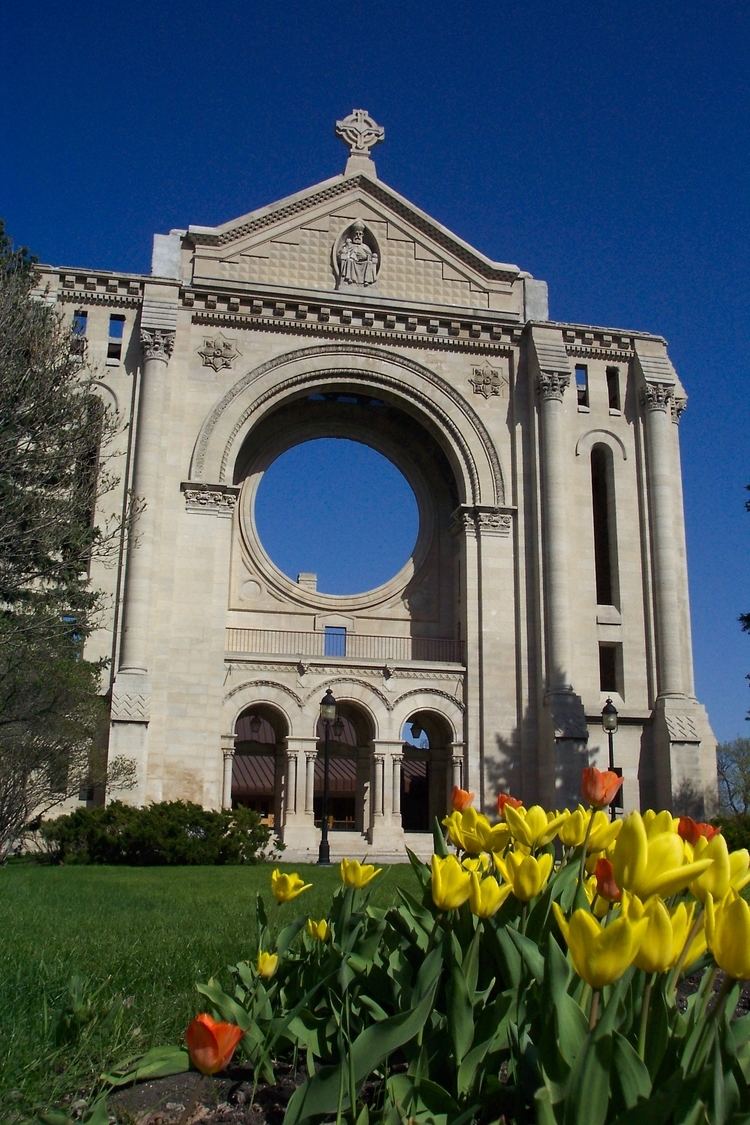Country Canada Established 1818 Area 24.46 km² Province Manitoba | City Winnipeg Time zone CST (UTC-5) Population 54,201 (2011) | |
 | ||
Saint Boniface is a city ward of Winnipeg that is the centre of much of the Franco-Manitoban community. It features such landmarks as the St. Boniface Cathedral, Boulevard Provencher, the Provencher Bridge, Esplanade Riel, St. Boniface Hospital, the Université de Saint-Boniface and the Royal Canadian Mint. It covers the southeast part of the city and includes le Vieux Saint-Boniface (Old St. Boniface), Norwood West, Norwood East, Windsor Park, Niakwa Park, Niakwa Place, Southdale, Southland Park, Royalwood, Sage Creek and Island Lakes, plus a large industrial area. The ward is represented by Matt Allard, a member of Winnipeg City Council, and also corresponds to the neighbourhood clusters of St. Boniface East and West. The population was 54,201 according to the Canada 2011 Census.
Contents
- Map of Saint Boniface Winnipeg MB Canada
- History
- Culture
- Notable natives and residents
- Media
- Sports
- References
Map of Saint Boniface, Winnipeg, MB, Canada
History
Succeeding cultures of indigenous peoples lived in the area for thousands of years before European exploration. It was an area of historic Ojibwe occupation.
Fur traders and European mercenaries hired by Lord Selkirk to protect his fledgling Red River Colony were among the area's first European settlers. With the founding of a Roman Catholic mission in 1818, St Boniface began its role in Canadian religious, political and cultural history - as mother parish for many French settlements in Western Canada; as the birthplace of Louis Riel and fellow Métis who struggled to obtain favourable terms for Manitoba's entry into Confederation; and as a focus of resistance to controversial 1890 legislation to alter Manitoba's school system and abolish French as an official language in the province (see Manitoba Schools Question).
French-speaking religious orders, including the Sisters of Charity of Montreal (better known as the Grey Nuns), who arrived in 1844, founded the early educational, cultural and social-service institutions, such as St. Boniface Hospital, the first in Western Canada. Early French-speaking missionary Catholic priests in the region founded the Collège de Saint-Boniface (dating to 1818) to teach Latin and general humanities to the local boys; it is now the Université de Saint-Boniface.
The early economy was oriented to agriculture. Industrialization arrived in the early 20th century. The Union Stockyards, developed 1912-13, became the largest livestock exchange in Canada and a center of the meat-packing and -processing industry. By the early 1900s, numerous light and heavy industries were established. St Boniface was incorporated as a town in 1883 and as a city in 1908.
In 1971, St. Boniface was amalgamated, along with several neighboring communities, into the City of Winnipeg. As one of the larger French communities outside Québec, it has often been a centre of struggles to preserve French-Canadian language and culture within Manitoba.
Culture
The Festival du Voyageur is held annually in February outdoors at Whittier Park and Fort Gibraltar. St Boniface is home to the Centre culturel franco-manitobain (CCFM), which features an art gallery, theatres, meeting rooms, and a community radio station. The area is also home to Le Musée de Saint-Boniface Museum, a French theatre company Le Cercle Molière, a local museum dedicated to Franco-Manitoban culture and history.
Notable natives and residents
Media
Winnipeg's three Francophone radio stations, CKXL-FM CKSB-10-FM and CKSB-FM, are located in St. Boniface and are licensed there, a legacy of when St. Boniface was a separate city.
The French-language weekly newspaper La Liberté is also based out of St-Boniface.
Sports
St. Boniface is represented by the St. Boniface Riels hockey team which plays in the Manitoba Major Junior Hockey League (MMJHL). The St. Boniface Riels were founded in 1971. They play at the Southdale Arena and have won five MMJHL championships: 1971-1972, 1972-1973, 1984-1985, 1985-1986, 2014-2015.
